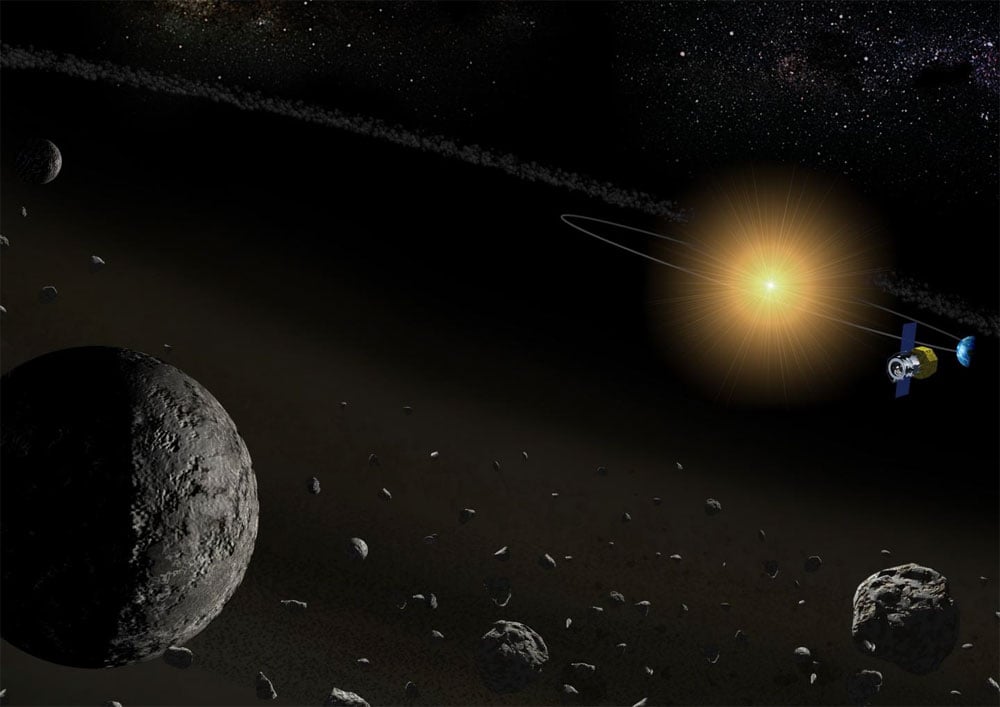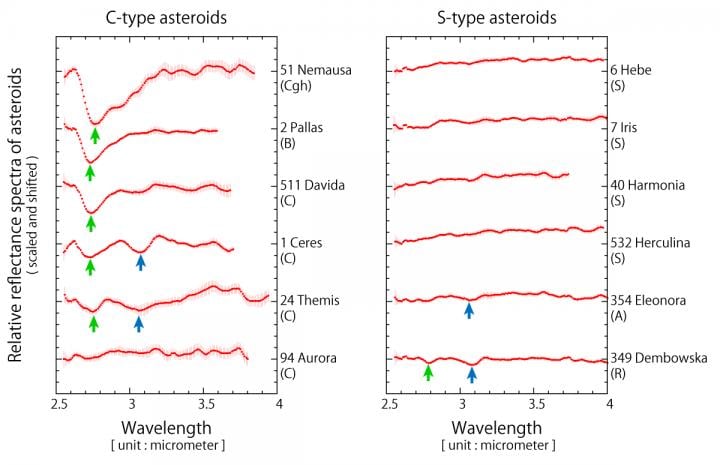A Kobe University research team has detected the existence of water in a number of asteroids for the first time. Water is retained in the asteroids as hydrated minerals that were produced by chemical reactions occurring within the asteroid.

By using a space-borne telescope, the team was able to successfully detect the presence of water in many asteroids. Courtesy of Kobe University.
The spectroscopic survey was conducted using the infrared camera (IRC) on board the Japanese IR satellite AKARI, launched in February 2006. In the warm mission period of AKARI, observations were performed for 66 asteroids for wavelengths from 2.5 to 5 μm. Observed results showed most C-complex asteroids to have clear absorption features related to hydrated minerals at a peak wavelength of approximately 2.75 μm, while S-complex asteroids were shown to have no significant features in this wavelength range.
IR wavelengths contain characteristic spectral features of substances such as molecules, ice, and minerals that cannot be observed at visible wavelengths. Hydrated minerals, such as those found on the asteroids, exhibit diagnostic absorption features at around 2.7 μm, and the absorption of water vapor and carbon dioxide in the terrestrial atmosphere prohibits observation of this wavelength with ground-based telescopes. It is therefore necessary to make observations from space-borne telescopes.

This shows six examples for both C-type and S-type asteroids. You can clearly see the absorption at wavelengths of around 2.7 μm (indicated by the green arrows) attributed to hydrated minerals. You can also see signatures of water ice or ammonia-rich material at around 3.1 μm (indicated by the blue arrows). The data shown in this figure are the reflected spectra of the sunlight by the surface of asteroids. Courtesy of Kobe University.
The present observations from AKARI are the first to directly confirm the presence of hydrated minerals in these asteroids, the researchers said. They further said that spectra of the observed asteroids show common patterns. To fully understand the observed patterns, it will be necessary to accumulate observations of more asteroids and compare space-borne measurements with the measurements of meteorites collected on Earth. Professor Fumihiko Usui said, “By solving this puzzle, we can make a significant step toward identifying the source of Earth’s water and unveiling the secret of how life began on Earth.”
The research was published in Publications of the Astronomical Society of Japan (https://doi.org/10.1093/pasj/psy125).